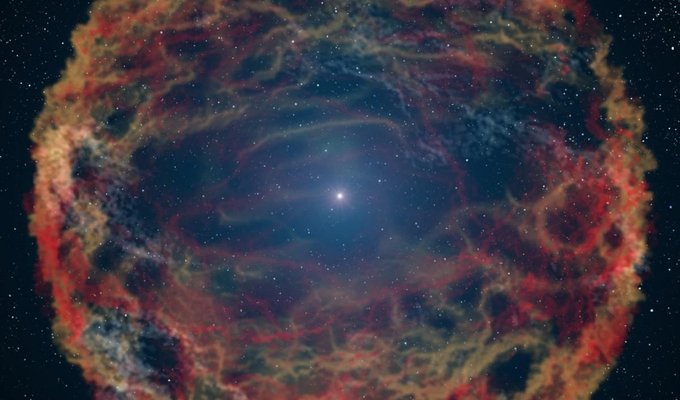The star that exploded was at least 50 times more massive than our Sun — probably much larger. It may have been the most massive supernova ever seen!

Just like all good stories, the life of a star has a beginning, a middle and an end.
The most massive stars end their tales in the most dramatic fashion. They light up the sky in an explosion that is bright enough to outshine a galaxy and violent enough to send the star’s insides flying out into space. When the dust eventually settles, all that remains is the collapsed core of the once mighty cosmic giant.
These explosions are called supernovae. Over the years, thousands have been seen and studied by astronomers like Iair Arcavi. So, when Iair spotted a new supernova back in 2014, he thought nothing of it. Like all other supernovae, this one lit up the night sky for a short time, before beginning to fade away. Since the event looked like it was coming to and end, Iair moved on to other projects.
A few weeks later, Iair returned to check up on the fading star and was astonished to see that it was getting brighter. Unbelievably, the star looked as if it had exploded a second time.
For the next two years, Iair and his team watched in amazement as this star broke all records. Over 600 days, the star brightened and dimmer five times — it was erupting over and over again! What’s more, delving into the star’s past revealed that it has exploded once before, over 60 years ago.
So, what’s happening? The truth is, no-one really knows. The best guess is a that the explosions are not being caused by the star collapsing, like a normal supernova. Instead, this star began making a weird substance called “anti-matter”. When the anti-matter touched the normal material in the star, it resulted in a powerful explosion. This allowed the star to flare up again and again.
But, like all good stories, the tale of this star has come to an end. After 600 days, the poor, exhausted star could no longer continue its cosmic firework display. After one last explosion, it began to fade forever...

















